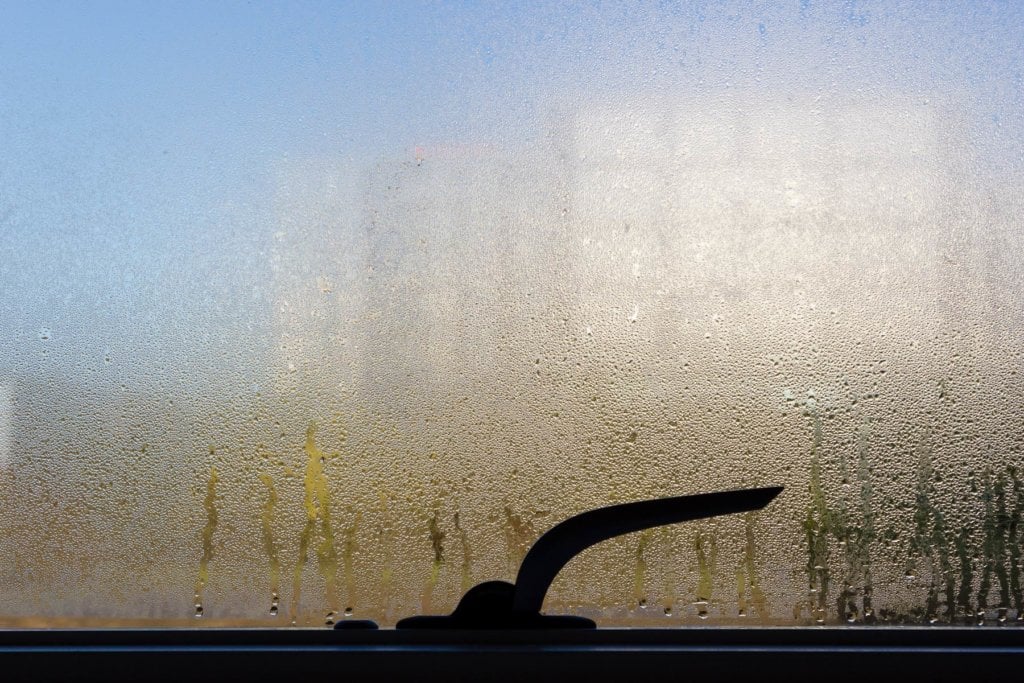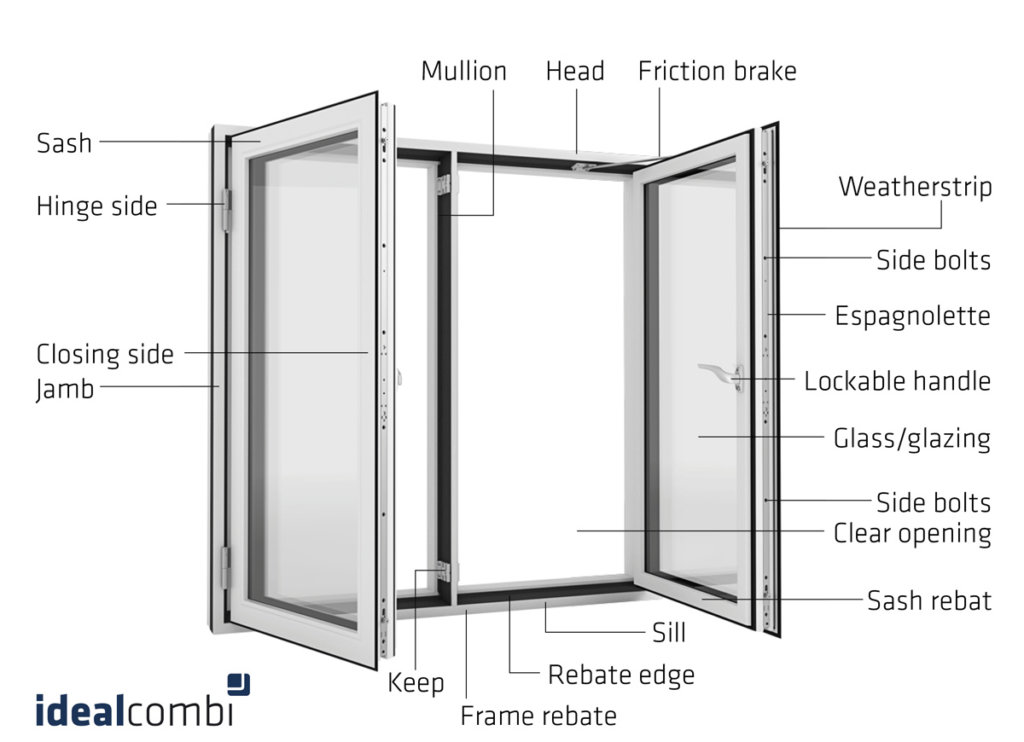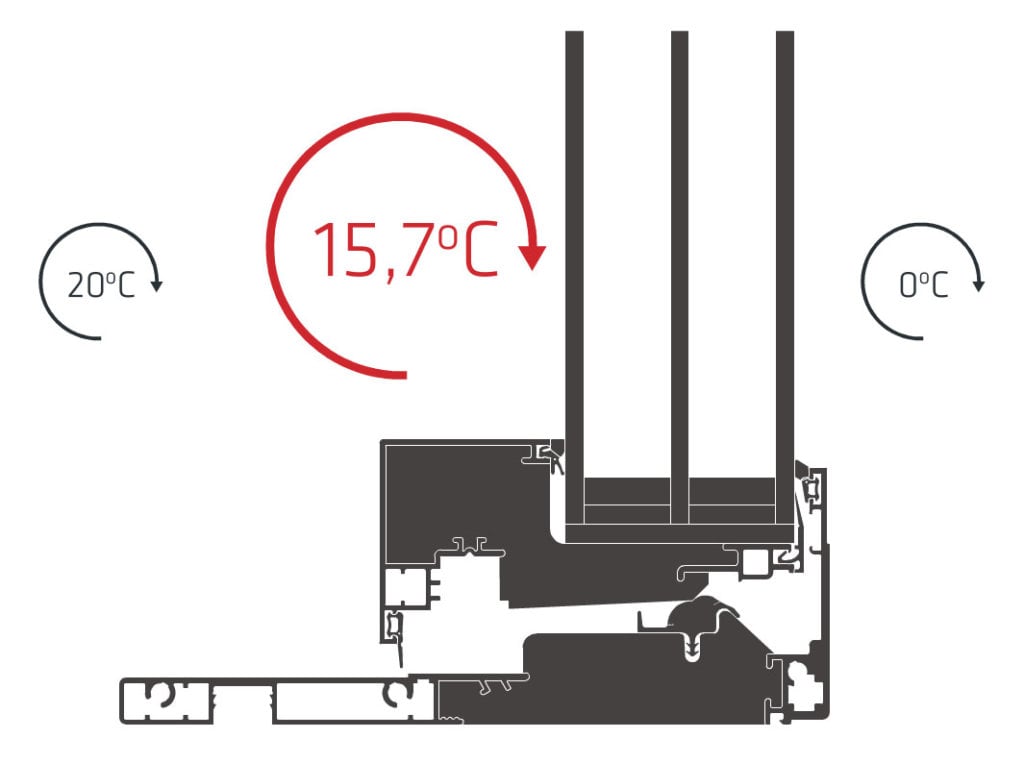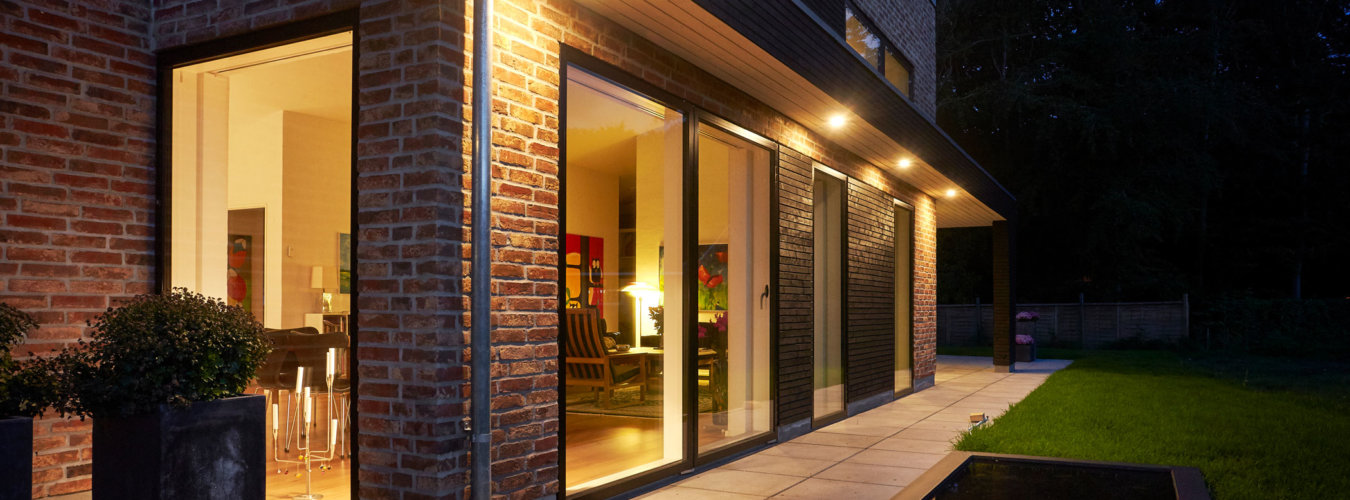Frequently asked questions
The most common questions from our customers
If you have recently replaced your windows to get rid of condensation on the inside – you might now experience condensation on the outside of your windows.
Condensation on the outside of the windows happens when the heat loss through the glass is so low that the dew will not evaporate. It will often only occur during spring or autumn.
This phenomenon should not be mistaken for low quality or broken windows – the good thermal insulation is proof that your windows are working as intended.
You may notice condensation on some windows and not on others. There is a number of reasons this could happen – supporting walls, roof overhang, trees etc. can all affect the occurrence of external condensation on your windows.


Most people are familiar with the problem of resin seeping through a surface, particuarly around knots. In order to avoid this problem, Idealcombi were the first windows manufacturer in Denmark to introduce finger jointing. Finger jointing is a processing method that locates knots, star shakes and defects in the wood by the use of cameras and scanners. The imperfections are cut away and the wood joined in a so-called finger jointing.
The finger jointing technique serves to reduce the number of knots in the surface by 90%. The dimensional stability is optimised by cutting the wood into smaller pieces and then rejointing it, which at the same time reduces the curvature of the wood to a maximum of 1 mm. per metre.
The external profile of the window typically comes with a powder coated aluminium screen that will never need recoating. The internal side, however, is made of wood and is delivered with a ready painted surface which may be repainted, e.g. in connection with restoration of the home/premises.
We recommend that you keep you windows clean both on the inside and the outside.
The powder coated aluminium is extremely durable if cleaned a few times a yeah. The painted timber on the inside of the window is also long lastning and we recommend you keep the timber clean and dry.
If you have any questions regarding your Idealcombi windows or doors feel free to get in touch.
Styling bars are typically needed to match old, existing small-sashed windows.
Styling bars from Idealcombi are manufactured as glue-on sash bars, both on the inside and the outside of the window. In addition, the low-E windows are equipped with a spacer placed in the same place as the sash bar, which lends an elegant look.
You can also use the styling bars to highlight architectural features of your design.
Learn more about styling bars for your windows >>
The structure of the window defines the properties of the glass as acoustic insulation. Thicker glass combined with a difference in the distance between the glass layers results in improved sound reduction. Glass lamination also has a beneficial effect.
It is important to define the type of noise you want reduced in order to find the right type of pane for the task. There may be a difference between traffic noise or noise from a football stadium.
The acoustic insulation of the glass is stated in decibels as a sound reduction figure – Rw. The figure indicates by how many decibels the glass reduces external noise – depending, however, on the type of noise. It is also important to keep in mind that Rw is a weighted value that represents the entire audio frequency spectrum. Various sounds are placed in various places in the frequency spectrum. The Rw value will therefore only form the basis of a conversion to the desired reduction of a given noise; it can never be seen as a given value for all types of noise.
Learn more about acoustic windows >>
This depends on product type and function, but Idealcombi offers a wide range of handle types. These range from standard espagnolette handles to various designer handles such as D-line handles and Randi handles. Handles also come with or without locking cylinder.
Contact our service department for help to change/upgrade the handles in your Idealcombi windows and doors.
Handles and accessories for Frame IC / Nation IC
The glass layers in a pane are kept apart by a spacer. In the early stages of double glazed windows, aluminium spacers were used, but these have gradually been replaced by stainless steel. Today, spacers are also available in synthetic materials.
The best synthetic and stainless steel spacers are called ‘warm edge’. These limit the heat loss along the edge of the glass and reduce the risk of internal condensation. Idealcombi uses synthetic warm edge as standard in all panes to reduce thermal bridging.
A glass pane consists of two or three layers of glass that are kept apart by means of a spacer bar. In modern panes, this space is filled with gas, typically argon, which contributes to the insulation property of the glass. On the outside of the spacer bar (which ensures the distance between the panes), a sealant is placed to keep the gas inside and thereby seal the pane.
In time, the sealant becomes less flexible and small cracks may form so that the gas will start to escape. The gas will be replaced by moist air, which is deposited as mist between the panes. Broken down panes should be replaced as they do not offer sufficient insulation.
A family of two adults and two children releases 10-15l of moisture per day, partly in exhaled air and partly from cooking etc.
When hot and humid air comes into contact with a cold surface, e.g. the glass of windows, the moisture in the air is deposited as condensation on the surface. The warmer the surface, the lower the risk of condensation.
When choosing a low E window with warm edge, the aim is to achieve the highest temperature possible on the inner surface. The structure of the window ensures minimal heat loss through the glass. If condensation forming on the inside of the glass is a common occurrence, this is a sign that the rooms need more airing or that the glass panes are past their best.

